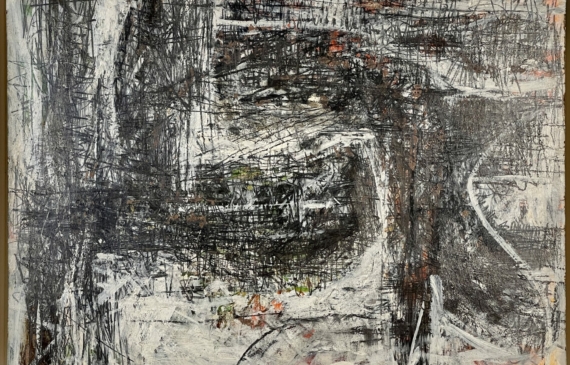
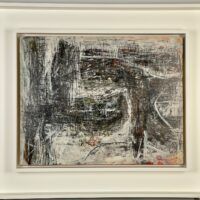
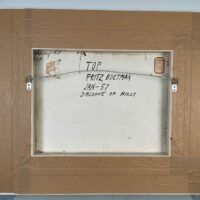
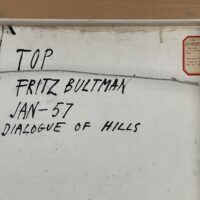
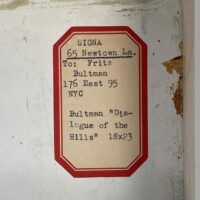
Fritz Bultman (American, 1919–1985)
Dialogue of Hills, 1957
Oil and pencil on panel
18 H. x 22 3/4 W. inches
Signed and inscribed verso: Fritz Bultman Jan-57 Dialogue of Hills
A central member of the New York School’s first generation, Fritz Bultman was renowned among his contemporaries. Hailing from New Orleans, Bultman initially studied under Morris Graves before moving to Germany in 1935 hoping to train at the Bauhaus – unfortunately, it had already been closed by the Nazis. Bultman landed in Munich and ended up learning from Hans Hofmann’s wife Miz (Hans was already in America at the time). After two years abroad, Bultman attempted to attend the new Bauhaus school in Chicago but that, too, quickly closed, leading him to Provincetown in search of guidance from Hans Hofmann. Bultman grew to split his time between Provincetown and New York, surrounding himself with vibrant artists of the day including Jackson Pollock, Lee Krasner, Robert Motherwell, Jack Tworkov, and others. While he was associated with this group of artists whose legacies have endured into modern times, Bultman is often omitted from acclaim even though contemporaries raved about his work. In 1950, along with a number of other expressionists, wrote a letter of protest to the Metropolitan Museum of Art regarding their disregard for Abstract Expressionism and other avant-garde movements. These artists were labeled “The Irascibles” by the press, and included Rothko, Stamos, Newman, Gottlieb, Pollock, among others who were all photographed for Life magazine in 1951. Some speculate that the reason Bultman has not been held to the esteem of his counterparts is his omission from the storied photograph, as he was studying bronze casting in Florence at the time on a grant from Italy. Another reason for his departure from the limelight could have been his disinterest in “art world politics,” as noted by Motherwell.
Bultman was the only original member of the New York School to fully incorporate sculpture into his oeuvre, creating free flowing shapes in bronze that seemed to involve their surroundings in the composition. His early paintings revolved around geometry and drew inspiration from the natural world around him, something he picked up from his studies with Hofmann. The artist’s style of intentional brushstrokes translates from his paintings to his sculpture to collage, his unique approach showing through any medium. Bultman spearheaded an initiative along with his wife in 1963 to create a collection of modern art for Tougaloo College, a black institution in Jackson, Mississippi, as segregation was still rampant in the south and African Americans were prohibited from attending “white” museums.